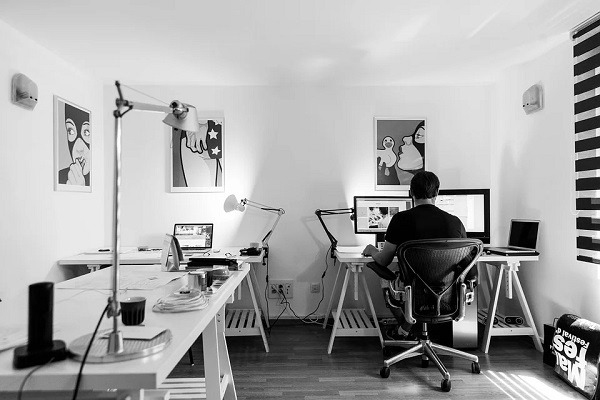People spend a lot of time at the office and are dependent on the equipment that has been supplied. Sadly this is often deficient, and it can create health issues for employees as a result. The consequences can include sick leave and even personal injury claims.
When ergonomic equipment was first recommended for offices, it was easy to view the idea as a mere sales tactic. When one does the research, however, the conclusion is very different. Let’s take a look at why ergonomic office solutions are seriously worth considering.
They Are Usually High Quality and Long Lasting
It’s wrong to assume that ergonomic equipment is the same as normal furniture, with a few bolt-ons. When looking online for information it is possible to find more here, including the fact that ergonomic designs can be fused with quality materials. Equipment that features cross wedge stabilizers and whisper motor technology can come with eco bamboo, german laminate, or high tensile steel. The fact that many top companies such as Philips and LG use ergonomic office equipment speaks for itself.
Sick Leave and Personal Injury Claims Affect Employees and Employers Alike
It’s not unusual to feel weak and sick while you’re working. These days, it is common for people sitting at a new desk to receive a regular workstation assessment to check on their well-being. This is designed to ensure the chair, desk, and computer equipment provides comfort and mobility for the worker. It should be designed around the person’s needs, rather than the person adapting to what is already in place.
One survey revealed that twelve sick days in a year related to issues resulting from poor office equipment. This obviously has an adverse effect on the profits for any business. In addition, anyone who can prove that their medical injury has been sustained through inadequate work equipment is likely to be able to claim financial compensation. Let’s now take a look at some of the equipment in turn, and see the benefits it provides.
Ergonomic Chairs Provide Support
These protect a person’s lumbar regions. They are designed to reduce lower back pain when used for eight hours a day. In addition to this, they are comfortable and may have headrests providing neck support to reduce stiffness in the neck and shoulders. No one’s back is straight because there is a natural curve. Straight-backed chairs are therefore unergonomic. Armrests adjusted to the corrected height can take the weight off the shoulders and upper arms. Similarly, the chair should be at the right height so that someone’s feet can rest firmly on the floor.
People sitting in a slouched position or slumped over their desks will be inviting back pain. A chair without wheels is inflexible and increases the need for a person to be reaching for things at awkward angles. Additionally, the more a person has to keep moving around, the more tired they will become as they work. Supportive cushions help keep the back in a good position. Consider using such ergonomic solutions as memory foam and breathable fabric.
Desks Need To Be at The Right Height
Non Adjustable desks can create issues for workers. The top of the computer needs to be level with the employees’ eyes. Anything else can result in pain and strain for the people involved.
Some workers use desks that have been converted so that the employee can stand as they work. People need to transition slowly into using these, as new strain is put upon the back and heart, and there can be an increased chance of developing varicose veins.
A Keyboard and Mouse Should Be Comfortable
If someone is seated consistently in the wrong position, they could end up with an injury. One such example is an RSI (Repetitive Strain Injury), Carpal Tunnel Syndrome, or Tendonitis. A person’s elbows need to be at 90 degrees as they work. Ergonomic keyboards may take some getting used to, but they are well worth it. Normal keyboards have been designed for men’s hands, which should immediately strike alarm bells for women.
Ergonomic designs honor the natural arc that someone needs when using their hands to type. The less far they have to reach for each letter, the less strain is placed on the wrist and hands. Some keyboards allow for a gentle slope for the wrists and include cushion support too.
An ergonomic mouse is designed to reduce tendon and muscle strain. It should compliment the shape of the person’s hand.
It is clear from this brief discussion that ergonomic equipment is more of an investment than a luxury. Being quality products, furniture and equipment will last for a long time. Whilst it may be more expensive, it will be cheaper than amassed sick days or personal injury claims. In return for their new equipment, the employees will be more happy and comfortable, and less likely to experience headaches, pains, and strains.
